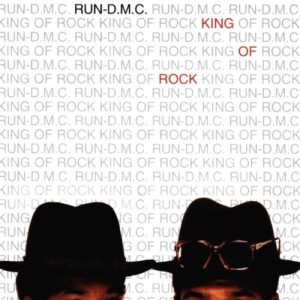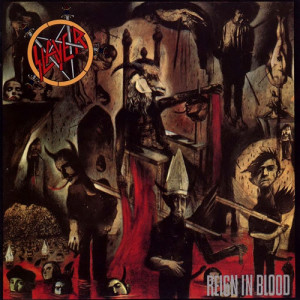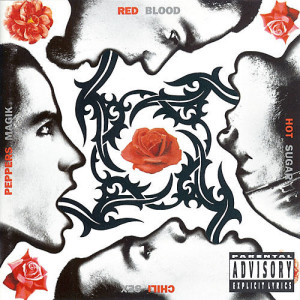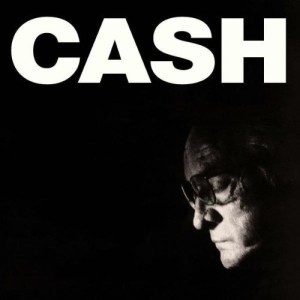I’m taking a bit of a break this week from the wonderful world movies and television to do my first music related write-up in over two months. Yes, it’s long overdue so I promise to make it worthwhile!
We all love music, right? Music is wonderful. You could easily get lost in a sea of blistering sounds ranging from classical to hardcore. Now, who gets the credit for making these magnificent tunes? The artist certainly but there’s always someone behind the melodies that help bring the music to life. A lot of the direction a musical artist takes in their work is due to their record producer. These individuals suggest ideas for musical input, are responsible to the feel and sound of their albums, oversees the actual recording, and sometimes even change entire songs around. A record that an artist wants to sound a certain way can sometimes end up sounding completely different by the time the actual recording takes place because of the producer’s guidance. Armed with extensive knowledge of music and production, these people are the unsung heroes and are partly the reason for a lot of artists’ success.
Having said that, there are quite a few prominent producers in music over the years. There’s Brian Eno who took U2 to new heights, Bob Rock who worked with Bon Jovi and Aerosmith and was responsible for Metallica’s groundbreaking self-titled record (commonly referred to as The Black Album), and Dr. Dre himself, the prolific rapper and Aftermath executive who turned Eminem and 50 Cent into stars.
Today I want to talk about one of the most influential producers of all time. He helped reinvent certain artists as well as give others the creative edge they needed to break through and find their trademark sound. That man is Rick Rubin and he’s guilty of bringing us some of the biggest hip-hop and heavy metal albums ever. The native New Yorker co-founded Def Jam Records with Russell Simmons in 1983 while still attending school at New York University and went on to sign fellow New York-based artists such as LL Cool J, Public Enemy, and Run DMC along with a few others. The label continues to boast the biggest names in music today hosting the likes of Iggy Azalea and Justin Bieber. Distinguished by his white t-shirt and long beard, Rick Rubin’s portfolio speaks for itself. Let’s check out some of my favorites:
Run DMC gained some attention with their self-titled debut record in 1984. A year later, they set out to differentiate themselves from the rest of the hip-hop world with their sophomore effort, King of Rock. This was one of the very first LP’s that Rick Rubin got his hands and though he didn’t produce it, his role in mixing would define his style for years to come. The title track is considered one of the signature numbers in hip-hop with its genre bending technique. Ear shattering guitar riffs combined with mind blowing rhymes set it apart from a lot of the hip-hop records of the time and enamored Rubin who’s played in bands since his teens. No example is bigger than the title track whose lyrics throw shade at anybody thinking a pair of rappers can’t rock out with the best of them. This led the band to join up with Aerosmith on a re-recording of Walk This Way, one of the biggest crossover tracks in music history. The song, You Talk Too Much features a thumping bassline reminiscent of a theme to an 1980s cop drama that is just so addicting. This proved to be a huge effect on later acts such as the Beastie Boys who incorporated a lot of the same sound for their debut record. And now…
Mike D, Ad-Rock, and MCA, collectively known as the Beastie Boys, were one of Def Jam’s first signed artists. Their first major label release, 1986’s License to Ill, shot to the top of the Billboard Top 200; selling over 10 million copies worldwide. That was partly due in part of Rubin’s influence on the record. Borrowing a page out of Run DMC’s book, Rubin and the Beasties agreed to a variety funk and classic rock samples as the background for the record’s sick rhymes. Some songs, like No Sleep ‘Til Brooklyn, even pack heavy guitar solos. The opening track, Rhymin’ & Stealin’ contains samples from Black Sabbath, Led Zeppelin, and The Clash. That says it all right there. Rubin even appeared in the music video for the album’s party anthem You’ve Got To Fight For Your Right (To Party) wearing a Slayer t-shirt which brings us to…
Bay Area thrash titans, Slayer, released two full-length albums before working with Mr. Rubin. The records, Show No Mercy and Hell Awaits, garnered the band some interest which led to a contract with Def Jam for their 1986 release, the classic Reign in Blood. A former punk rock band member, this was Rubin’s first foray into heavy metal and certainly wouldn’t be his last. Slayer themselves were heavily influenced by punk rock in the vain of Minor Threat and The Stooges which helped flesh out their seamless thrash sound. The two longest tunes would be two of the most well-known Slayer tracks, Angel of Death and Raining Blood. The record contained sharper production with emphasis on aggression, speed and shorter tracks reminiscent of the punk tracks that Rubin and the band adored adored. Reign in Blood would be released the same year as Metallica’s Master of Puppets and Megadeth’s Peace Sells…But Who’s Buying?; helping define the sound of thrash metal records for years to come to come. Rubin definitely played a big hand in helping Slayer break through to the heavy metal forefront and returned to the studio with the band for their next release, 1988’s South of Heaven which used the same style of production. Their 1990 effort, Seasons in the Abyss. also had Rubin’s fingerprints all over it. The title track is one Slayer’s best with six minutes packed with unbridled thrash fury.
The funky L.A. rockers were in full force by the time the 1990s came around. After the Red Hot Chili Peppers captured a few minor hits and moderate radioplay, creative differences with their previous label, EMI, led them to look elsewhere to release their music. They eventually settled on signing with Warner Bros. who released their giant 1991 release, Blood Sugar Sex Magik. For this record, Rubin decided not to add to RHCP’s sound but take away instead. First off, Rubin toned down a lot of the intricate instrumentalization seen on the Chili Peppers’ previous records. This led to more stripped down sound on BSSM with an emphasis on funk. Despite this, new guitarist John Frusciante still showed off some killer riffs. He even covered the opening riff to Black Sabbath’s (one of Rubin’s favorite bands) Sweet Leaf at the end of Give It Away. In an interesting tidbit, he pushed for the band to include their megahit ballad, Under the Bridge on the record. Imagine if that song never saw the light of day. Funny, huh?
Former Misfits frontman, Glenn Danzig, departed from the group in 1983. Though he cut his teeth with the punk legends, his later music had started to implement a greater emphasis on heavy metal. After seeing him perform with his band, Samhain, Rubin decided to sign them. With an all-new lineup and going by Danzig’s namesake, the group entered the studio to record their first record with Rubin serving as executive producer. He made sure that Danzig’s material bore no resemblance to his punk predecessors as evidenced on the tracks Possession and Am I Demon? The popular single, Mother, became the biggest song that Glenn ever wrote and it was Rubin who decided it should be released as a single. It led to heavy rotation on MTV and rock radio which was great exposure to the group. It was clear that Danzig had successfully moved on from the Misfits.
System of a Down hit the music scene in the late 1990s and caught the eye of Rubin who was impressed by Serj Tankian’s thriving voice, Daron Malakian’s guitar work, and John Dolmayan’s expert drumming. It was clear that he stumbled upon the next big thing in metal. Soon, they were signed by the producer and helped put out their 1998 self-titled release shortly after. It spawned the singles Sugar and Spiders, both of which received decent radio and airplay. Those tracks made sure to highlight the vocals and splitting guitars at a time when fans were tired of the nu metal garbage that was flooding the scene. This was further made clear on their second album, Toxicity, which showed that they were legit and more rounded than the Korns and Limp Bizkits of the day. They were already climbing the ranks of the genre but once Chop Suey! hit the radio, it became one of the hottest rock singles of the 2000s and affirmed SOAD’s longevity. It even netted a Grammy nomination for Best Metal Performance. Like their previous effort, Rubin assisted in production on Toxicity and his vision catapulted the record to number one on the Billboards in its first week of release.
The Man in Black, Johnny Cash’s legacy was exposed to an entire new generation of fans with his 2002 release. People my age weren’t familiar with a lot Cash’s material during our adolescence outside of a few songs our parents listened to. Thanks to The Man Comes Around, fans were able to see glimpses of the genius that the Folsom Prison Blues singer possessed. With the assistance of Rubin, Cash’s premiere voice was complimented mostly with an acoustic guitar and piano as he belted through such numbers as Depeche Mode’s Personal Jesus and The Eagles’ Desperado. Though the record is comprised mostly of cover songs, his rendition of Nine Inch Nails’ Hurt was a huge hit and had people proclaiming it was just as good if not better than Trent Reznor’s version. A music video of the song was shot and was America’s last real look at Cash before he passed away a year later. It was nominated for Video of the Year at the 2003 MTV Video Music Awards making Cash the oldest MTV VMA nominee at the age of 70. Other than the biopic, Walk the Line, Johnny Cash’s lasting legacy in music some argue could be attributed to Rick Rubin.

By the time 2003 rolled around, Jay-Z was one of the biggest names in hip-hop. Even at the very top of the rap game, Hova wanted more and did so by attempting something he’d never done before. He’s teamed with almost every name producer in rap so who does he turn to next for a hit? That’s right, Rick Rubin. For his eighth album, The Black Album, Mr. Carter enlisted Rubin’s help for the album’s biggest single, 99 Problems. Based on a song Ice-T released in 1993, the song is brought to life with a distinctive guitar riff and and live drums giving it a rockier feel. It was unique and the Brooklyn rapper absolutely destroys with his flow. Rubin is actually shouted out at the very end of the song. Once upon a time, I swore off hip-hop for good but 99 Problems was one of the few tracks to slowly bring me back into the game. This would be Hova’s last record before his “retirement” which lasted three years, returning in 2006 with Kingdom Come.










